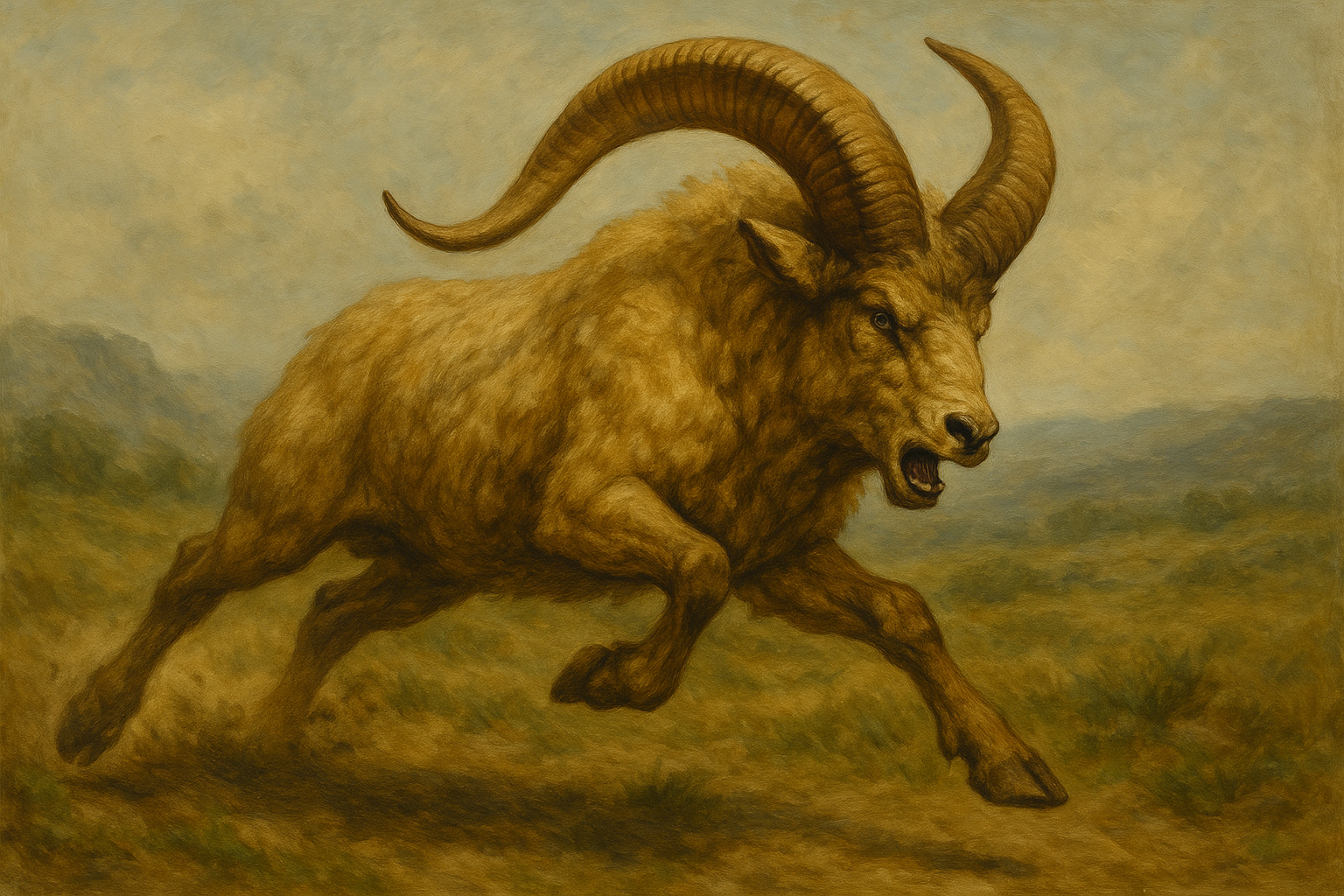Media and Persia in Daniel
"The Lord has stirred up the spirit of the kings of the Medes, because his purpose concerning Babylon is to destroy it."

Two Kingdoms or One?
One issue with the Book of Daniel that has caused considerable confusion is whether Daniel treats the Medes and Persians as two successive empires or as a single Medo-Persian Empire. The vision of the ram and the goat in Daniel 8 reveals that Persia held dominant power when Babylon was finally overthrown. However, this does not mean the Medo-Persian Empire should be viewed as a single, continuous second kingdom from the outset.
Isaiah and Jeremiah had specifically prophesied that Media, not Persia, would be stirred up by God to destroy Babylon. Daniel’s narrative supports this, as he emphasizes that after Babylon’s fall, Darius the Mede received the kingdom. This suggests that Media had a distinct role in God’s plan, albeit briefly.
In the vision of the statue in Daniel 2, the first kingdom—the head of gold—is explicitly identified with Nebuchadnezzar himself. His personal reign marks the true height of Babylonian dominance. After Nebuchadnezzar’s decline and death, Media emerged as a transitional empire before Cyrus of Persia united the two and led the final conquest of Babylon. Therefore, Media stands as a separate second kingdom in the prophetic sequence, followed by Persia as the third.
Media in Isaiah and Jeremiah
Isaiah lived and prophesied more than a century before Babylon became the dominant world empire. Despite this, Isaiah foretold the future fall of Babylon before it rose to power. His prophecy is remarkable because he names the Medes as the nation God would use to destroy Babylon.
Jeremiah lived during the actual rise of Babylon and witnessed its conquest of Jerusalem. He also warned of Babylon’s future destruction, and he too mentions the Medes specifically as God’s chosen instruments to overthrow Babylon. This proves that Media had a distinct and important role to play, separate from Persia.
"Behold, I am stirring up the Medes against them, who have no regard for silver and do not delight in gold." — Isaiah 13:17
"A stern vision is told to me; the traitor betrays, and the destroyer destroys. Go up, O Elam; lay siege, O Media; all the sighing she has caused I bring to an end." — Isaiah 21:2
"Sharpen the arrows! Take up the shields! The Lord has stirred up the spirit of the kings of the Medes, because his purpose concerning Babylon is to destroy it." — Jeremiah 51:11
"Prepare the nations for war against her, the kings of the Medes, with their governors and deputies, and every land under their dominion." — Jeremiah 51:28
These passages clearly portray Media as an independent force, divinely appointed to bring judgment on Babylon.
Daniel’s Emphasis on Media
Daniel was taken to Babylon as a young man during the exile (around 605 BC) and lived through the reigns of Nebuchadnezzar, Belshazzar, and into the time of Darius the Mede and Cyrus the Persian. His visions and writings reflect the fulfillment of what Isaiah and Jeremiah predicted.
Daniel personally witnessed the fall of Babylon and noted:
"Your kingdom is being divided and will be given to the Medes and the Persians." — Daniel 5:28
Although Daniel acknowledges that Babylon was conquered by a coalition of Medes and Persians, he consistently draws attention to Darius the Mede. This repeated emphasis gives the impression that the Medes directly followed the Babylonians in power, even if Persia quickly became dominant afterward.
In Daniel 5:31, after the fall of Babylon, we read:
"And Darius the Mede received the kingdom, being about sixty-two years old."
This emphasis continues in Daniel 9:1:
"In the first year of Darius the son of Ahasuerus, by descent a Mede, who was made king over the realm of the Chaldeans."
Daniel 11:1 also mentions:
"And as for me (an angel), in the first year of Darius the Mede, I stood up to confirm and strengthen him."
The Vision of the Ram
Daniel's first three visions, recorded in the Book of Daniel, span roughly 50 years. The first vision, the Statue (Daniel 2), occurred around 603 BC during the second year of King Nebuchadnezzar’s reign in Babylon. The second vision, the Four Beasts (Daniel 7), took place in 555 BC, in the first year of King Belshazzar’s reign. The third vision, the Ram and the Goat (Daniel 8), was received in 553 BC, the third year of Belshazzar’s reign—shortly before Cyrus the Great united Media and Persia, forming the Medo-Persian Empire.
Timeline of Daniel’s First Three Visions
| Vision | Approximate Date (BC) | Context | Key Details |
|---|---|---|---|
| First Vision: The Statue (Daniel 2) | ~603 BC | Second year of King Nebuchadnezzar’s reign in Babylon | A statue made of various materials representing four successive empires. |
| Second Vision: The Four Beasts (Daniel 7) | 555 BC | First year of King Belshazzar’s reign | Four beasts symbolizing four successive empires. |
| Third Vision: The Ram and the Goat (Daniel 8) | 553 BC | Third year of King Belshazzar’s reign | Vision set in Susa, depicting the Medo-Persian Empire and the rise of Persia. |
This third vision is set in Susa, the province of Elam, which is notably the region where Cyrus originated. In the vision, Daniel sees a ram with two horns, representing the Medo-Persian Empire. The horns are described as unequal, with one horn growing later and higher than the other, symbolizing Persia’s eventual dominance over Media. The vision presents Media and Persia initially as two distinct powers that later operate as a unified empire, with Persia becoming the dominant force.
“As for the ram that you saw with the two horns, these are the kings of Media and Persia.”
— Daniel 8:20 (ESV)
Media’s Temporary Dominance
Historically, the Median Empire was briefly independent and even powerful before Cyrus the Great of Persia overthrew the last Median king. From that point onward, Media was incorporated into the growing Persian Empire. However, Cyrus himself was of both Persian and Median descent, and his early conquests involved cooperation with Median nobles.
Daniel's prophecies prove that the Median phase held a brief but distinct role, particularly in the immediate aftermath of Nebuchadnezzar’s fall. Daniel’s emphasis on Darius the Mede aligns with the prophecies of Isaiah and Jeremiah, highlighting Media’s temporary but significant role in God’s judgment upon Babylon.
Two Successive Kingdoms & One United Empire
The so-called “Medo-Persian problem” is clarified when one considers Scripture in full. Isaiah and Jeremiah had foretold that the Medes—not a future Medo-Persian alliance—would be God’s chosen instrument to punish Babylon. Daniel affirms this by repeatedly highlighting the Median identity of Darius, who first took over Babylon after its fall.
The Book of Daniel thus presents a prophetic structure in which Nebuchadnezzar’s Babylon is the first kingdom, Media is the second, and Persia, united with Media under Cyrus, is the third. The sequence is not confusing or contradictory—it reflects the precise fulfillment of earlier prophecies and the historical transition from Babylon to Media, and then to Persia as it became the dominant partner with Media.

